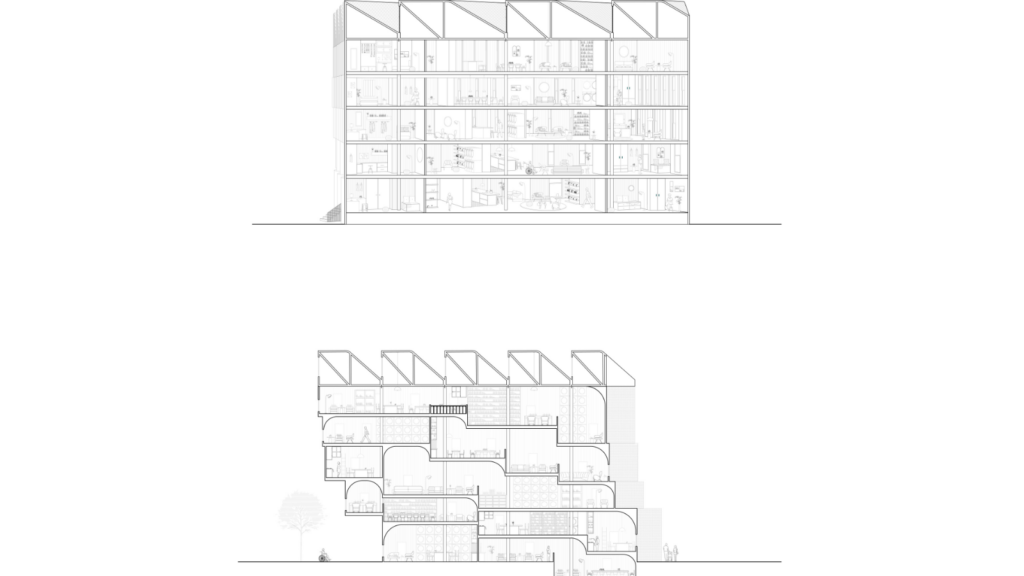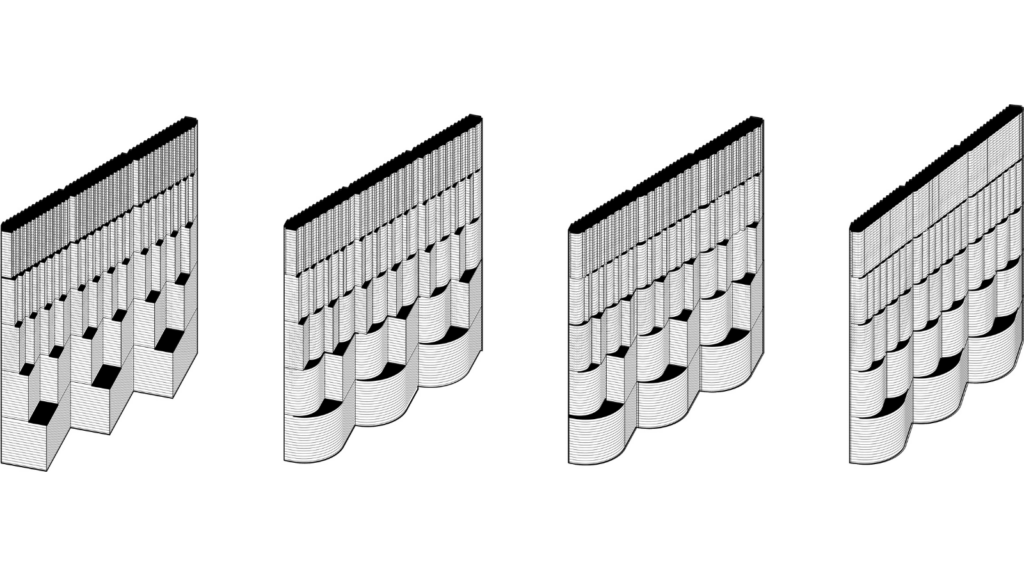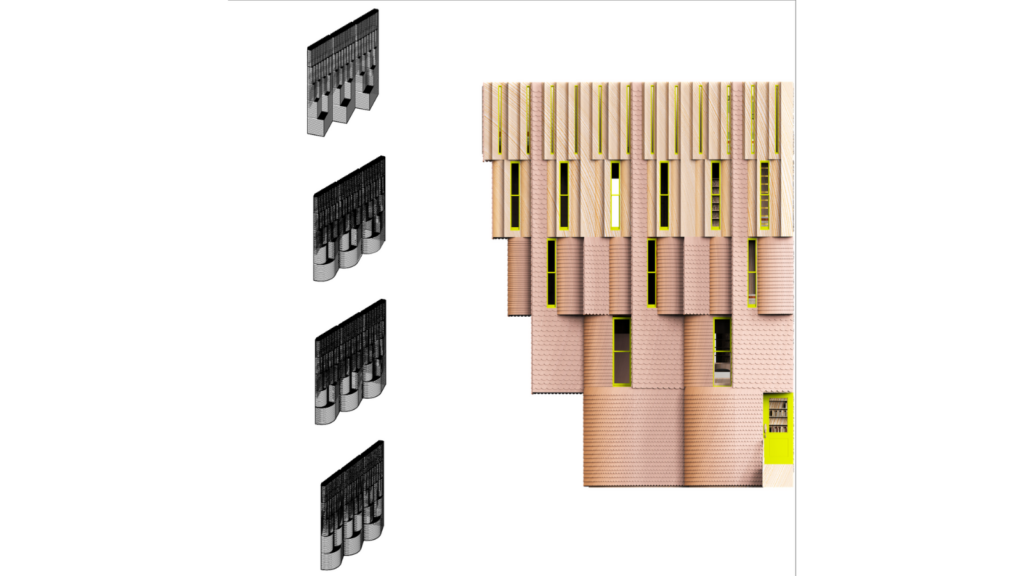
Janette De Los Santos & Aliza Rosenkranz
University of Southern California, School of Architecture
Professor: Brian DeLuna
The Return of Housing is a co-living project and evolving dynamics of modern domesticity, reimagining the complex and relationship between loneliness and togetherness, individuality and collective. This design seeks to subvert traditional housing typologies, reflecting the duality of our need for both personal privacy and social engagement. It is a spatial experiment in inhabitation, pushing the boundaries of what home, community, and collectiveness can mean within the context of contemporary urban housing.
Shifted Housing
The Return of Housing is a co-living project and evolving dynamics of modern domesticity, reimagining the complex and relationship between loneliness and togetherness, individuality and collective. This design seeks to subvert traditional housing typologies, reflecting the duality of our need for both personal privacy and social engagement. It is a spatial experiment in inhabitation, pushing the boundaries of what home, community, and collectiveness can mean within the context of contemporary urban housing.
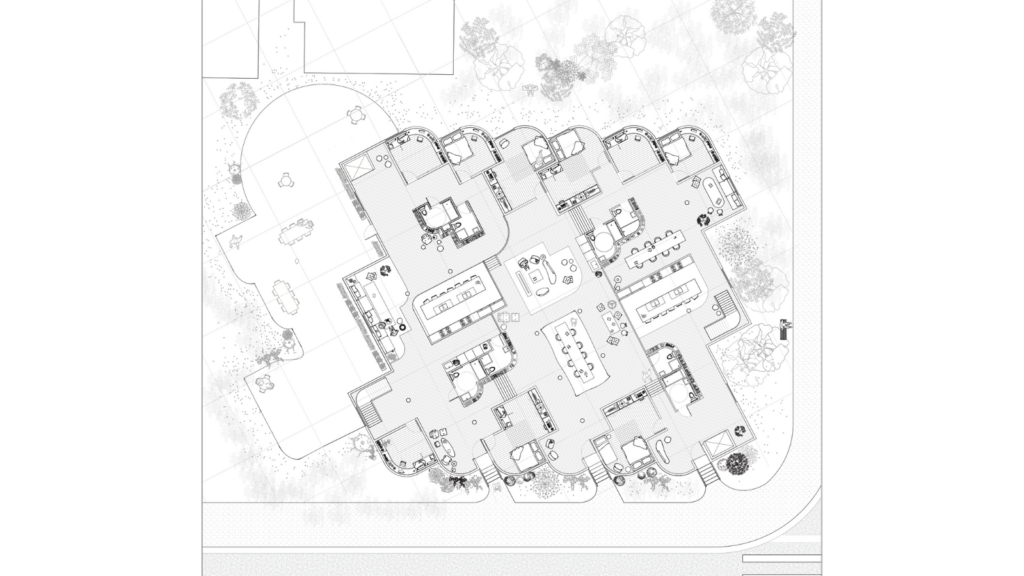
At its core, the project addresses the isolation often experienced in urban environments by fostering socialization and social interaction through the emphasis on shared spaces. These shared areas are intended as catalysts for organic gatherings and spontaneous social exchanges, helping to cultivate a sense of belonging and collective identity. Residents can shift between their individualized private spaces, designed to offer both solitude and curated views of the surrounding urban landscape, and flexible communal zones that encourage social engagement and community-building.
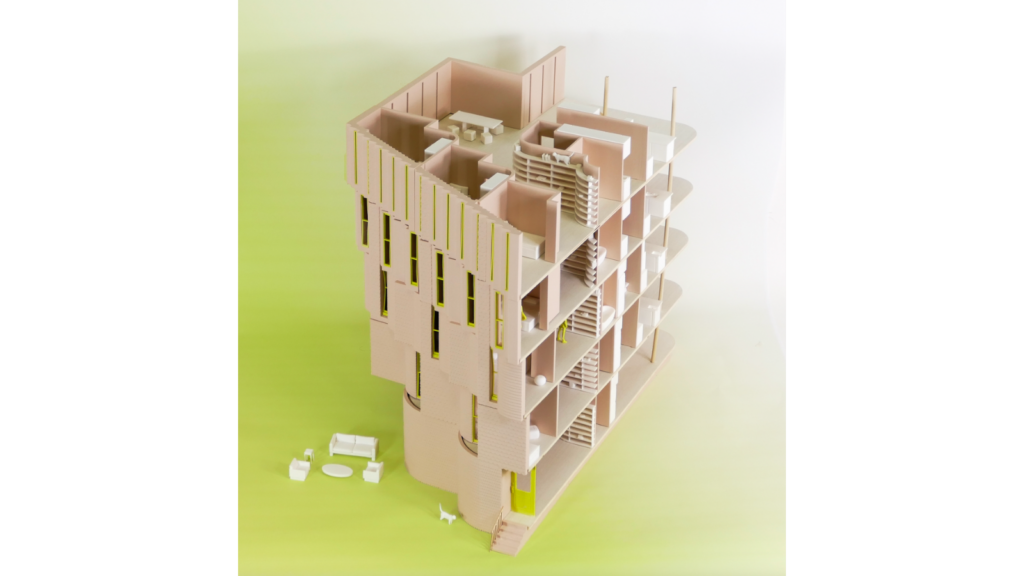
The design integrates the concept of a “minimal dwelling,” —a private, modular unit integrated into the collective housing structure. Each unit offers residents the intimacy of personal space, while the repeating design allows a balance of luxury and affordability in the overall project. The tessellating individual rooms maximize spatial efficiency, allowing for wide, open communal spaces that enhance the quality of living. The strategic arrangement of these units also influences the building’s facade, creating an intricate exterior form that mirrors the project’s interior and reflects the programmatic blend of individuality and interconnectedness.
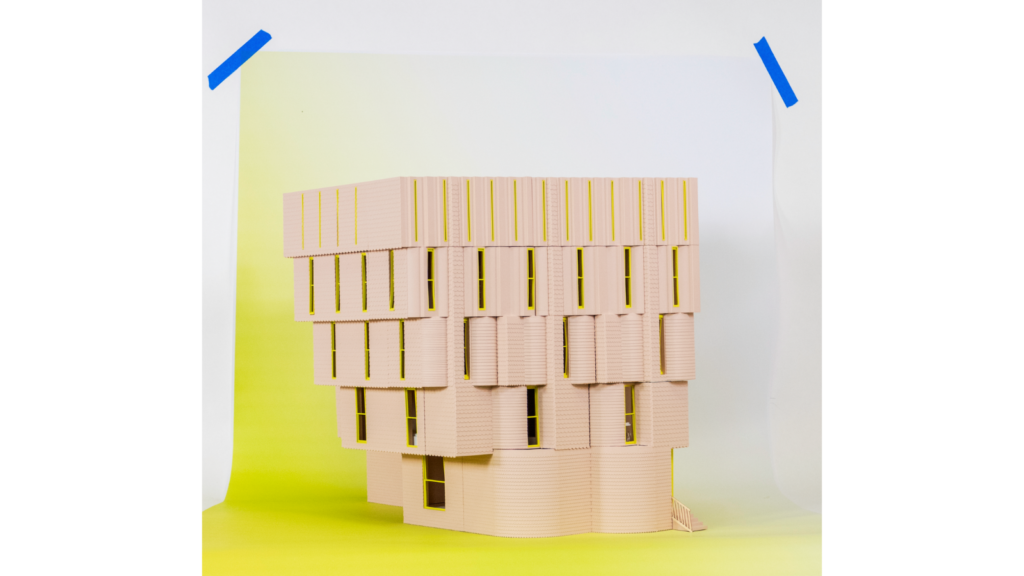
The building facade evolves in resolution with each floor, reflecting the increasing room density and potential for occupancy. The pattern achieved through shifting room geometry strategically blends and separates with elevation to create an interconnected, cohesive facade. It plays on the vertical aesthetics of traditional townhouses and takes inspiration from the long-standing tradition of shingles in domestic architecture.
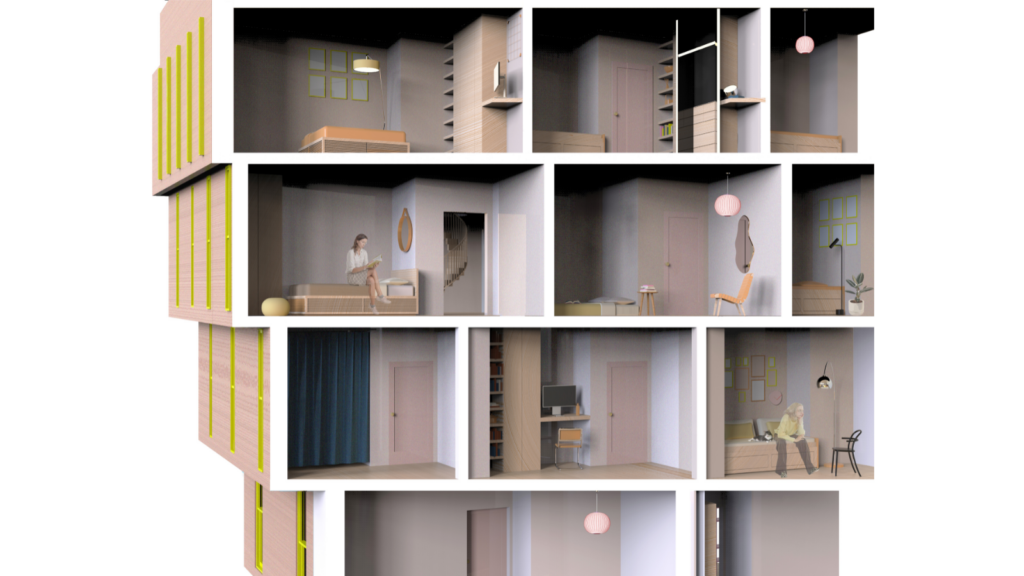
The Return of Housing represents a progressive rethinking of how we inhabit urban spaces, offering a flexible and inclusive model for future living. It is a step toward redefining how we live, a vision of co-living, where privacy, community, and sustainability come together to foster an enriched and interconnected way of life.

